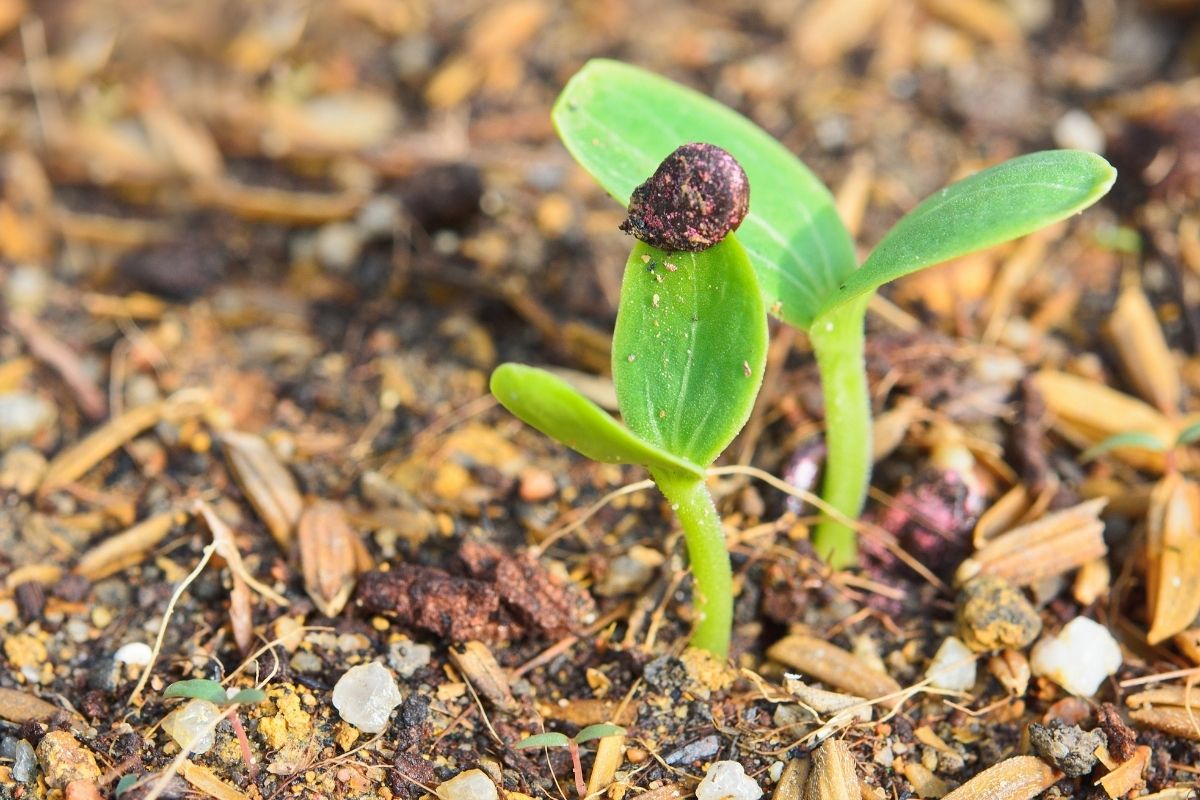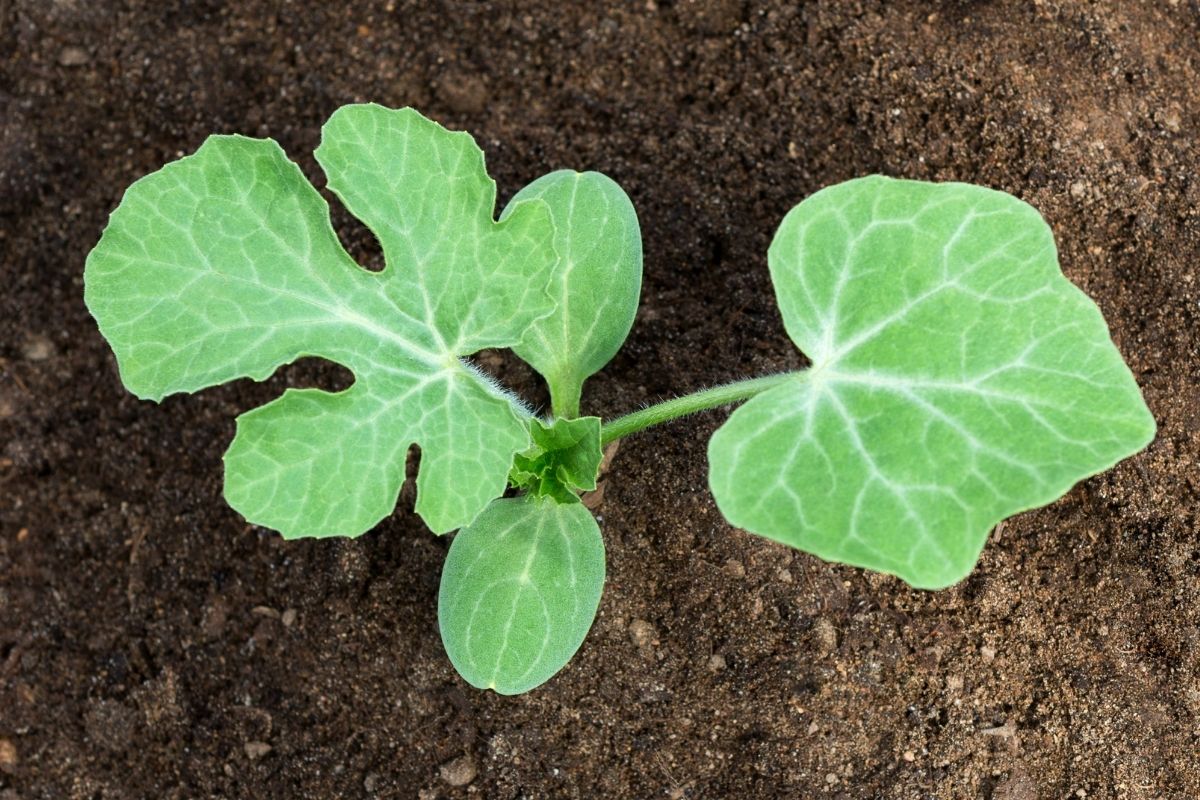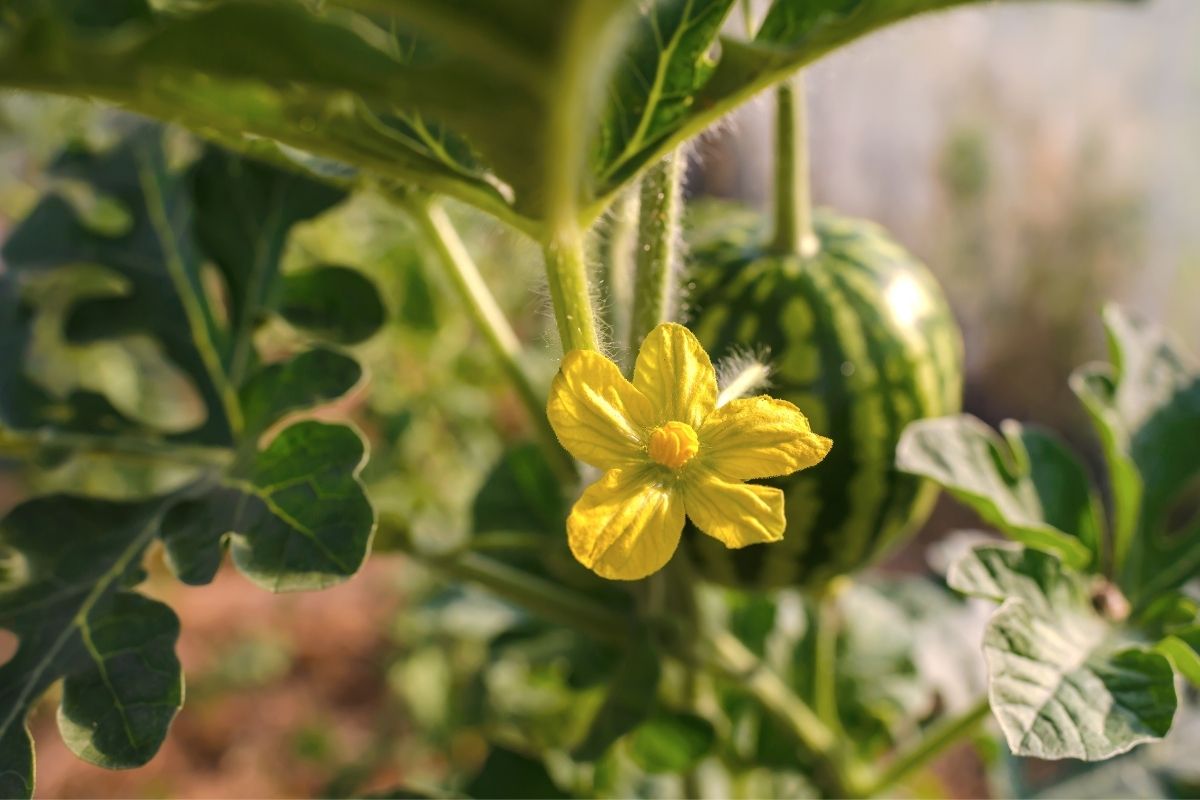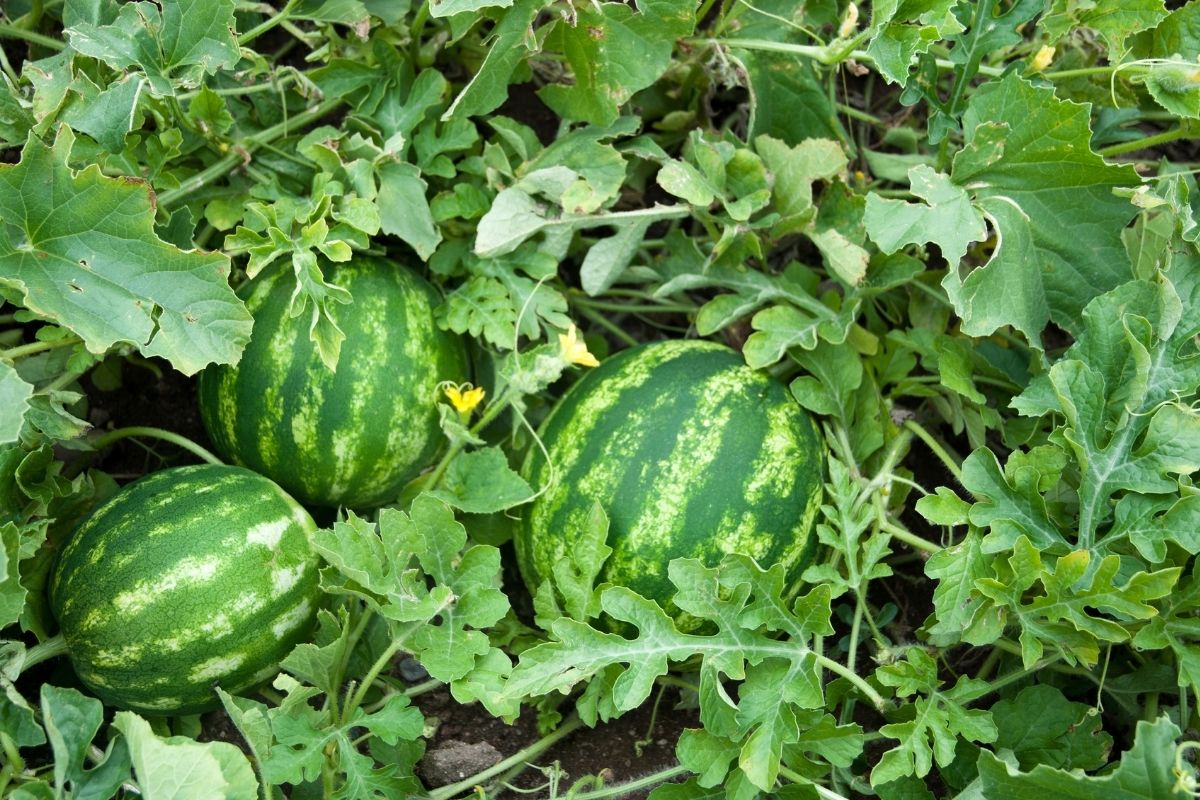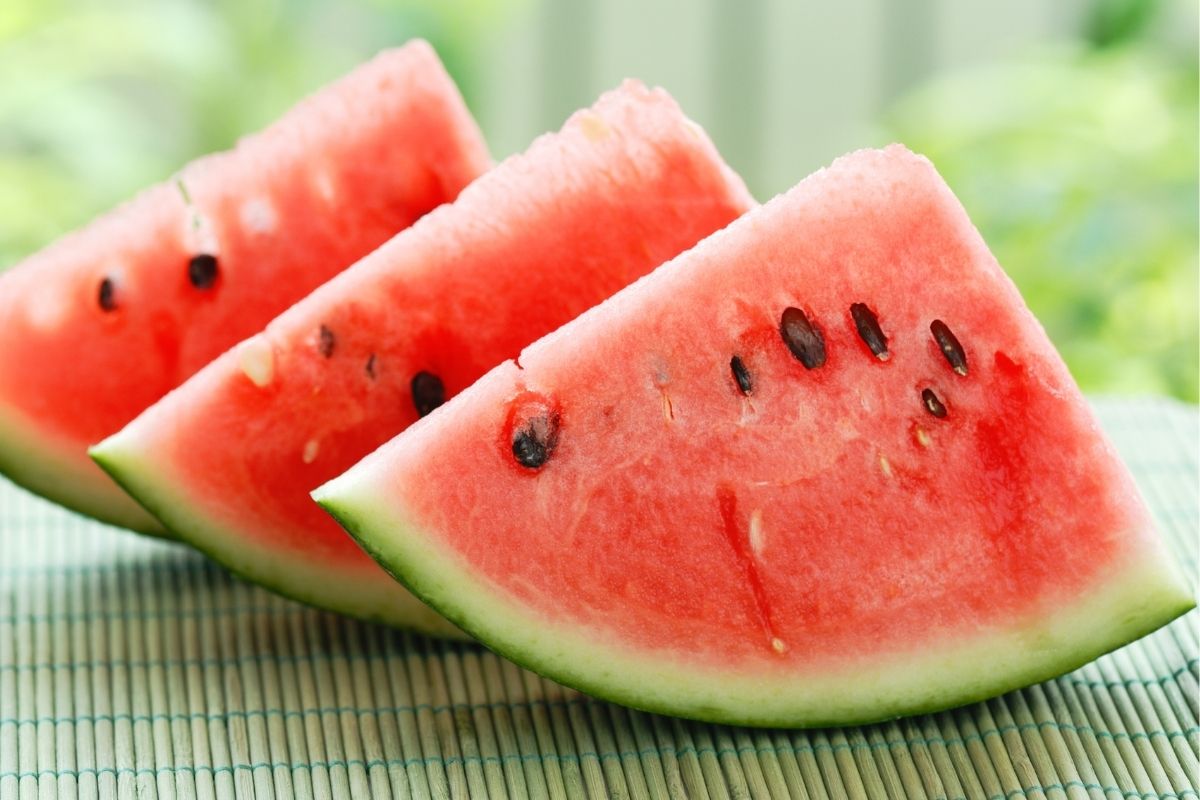Few fruits say summer like watermelon. Whether served simply in generous, kid-friendly wedges or sliced into a sophisticated salad with feta and herbs, the sweet, juicy flesh is a treat that's as refreshing as it is healthy. Watermelon is also one of the most fun fruits to put on the table, thanks to its exuberant size, vivid colour and sheer dramatic value.
And while there's certainly nothing wrong with a shop-bought melon, it adds an extra edge of satisfaction to tuck into a melon you've grown yourself. Luckily, if you're in a suitably warm and sunny climate, it's not hard to grow this vigorous annual plant from seed in just a few months.
The various types of melon are all members of the cucurbit family, along with cucumbers, pumpkins and summer squash, and basic cultivation will be familiar to anyone who's grown melon's more everyday relatives. The simple step-by-step growing guide that follows is focused on watermelon in particular, but the same overall method can be followed for rockmelon, honeydew and other melons, with the main differences coming in the mature size of the plants and the spacing needed when sowing.
Choosing a Growing Spot
Watermelon is a fairly demanding plant to grow in terms of resources, if not necessarily in attention. It requires plenty of space, plenty of sun, plenty of water, and a certain amount of time. Choose a sowing spot that provides direct sunlight for at least six hours per day, with enough space to sow the seeds at least 90cm apart in all directions, preferably more.
Prepare the soil by weeding thoroughly, and dig in plenty of aged compost or rotted manure to improve drainage and boost fertility. Also ensure that a good supply of water is available close by: although the watermelon plant can grow in surprisingly dry conditions, it requires frequent deep watering to produce large, well-flavoured fruits with the characteristic sweetness.
And lastly, watermelon seeds need a soil temperature of 27 to 32C to germinate, and also three to four months of warm weather with absolutely no frost to fully ripen, so don't be tempted try them if your local growing season isn't long enough. If you live in a cooler climate that's on the edge of viability, grow them in the most sheltered spot available to help maintain warmth and eke out a few extra days or weeks of ripening time.
Sowing the Watermelon Seeds
Watermelon is best sown direct into the soil, as the delicate root systems are easily damaged when transplanting from seed trays to the outdoors. You can try starting them off in larger seed pots to gain a few weeks at the start of the season, but be prepared to lose some seedlings as you move them to their outdoor beds, and in any case transplant shock may put a pause on growth that undoes any benefits of sowing early.
To sow direct, wait until the soil has warmed to 25C or higher, then make raised mounds at least 90cm apart and sow two or three seeds 2 to 3cm deep into each one. Moisten the soil without waterlogging it, and maintain light but consistent watering until germination, which usually takes 10 to 14 days.
Once the seedlings appear, thin down to the single strongest one per mound. The tender young seedlings are at risk from slugs and snails, so take the usual precautions including beer traps, barriers and manual collection.
Getting a Good Harvest
Given the right conditions, watermelon grows quickly and reliably. However, a few simple steps will help you toward a more rewarding harvest. First, be vigilant with watering throughout the whole growing period. As the name suggests, watermelons can be very thirsty plants indeed, and require regular deep watering to flourish.
The plants develop as vines that scramble over the soil with a spread of 2m or more. The growth can be kept in check by pinching out the vine's growing tip, which will also encourage more of the fruit-bearing side shoots to form for a better harvest.
Once the flowers start to appear, feed with a liquid plant food. Both male and female flowers are produced on each vine, with the male ones appearing first. Although the plants are self-fertile, and will often get by with the help of bees and other pollinating insects, hand pollination may be needed to ensure full fruit production. To do this, simply dab a soft paintbrush into the centre of the male and female flowers in turn, gently transferring pollen from one to the other.
As the fruits begin to develop from the pollinated flowers, place a mulch of straw or sugar cane underneath each one to keep them from rotting on the wet soil. Continue with consistent watering, and feed every couple of weeks to maintain healthy growth.
Harvesting Watermelon
After roughly three to four months, the fruits should be reaching full size and approaching ripeness, with each plant producing three to six melons. Signs that the melons are nearly ready include a slight yellowing on the underside, and the vine itself starting to shrivel and die off. To confirm ripeness, firmly tap each fruit and listen for a hollow thumping sound which shows that the fruit is ready to be picked.
To harvest, slice through the stem leaving a few centimetres attached to prevent damage to the melon and give it a few days’ extra shelf life. However, even carefully harvested watermelon doesn't store well, so keep your bounty in cool, dark conditions, and eat within a few days.
Pests, Diseases, and Other Common Problems
Watermelon is fast-growing and vigorous enough to handle most pests and problems once the plants have gone past the initial seedling stage. However, there are three main issues to be aware of.
- Tender new side growth can be vulnerable to aphids, so check frequently, and use a liquid soap spray or similar to clear infestations before they can really take hold.
- As with other cucurbits, melons can be susceptible to powdery mildew growing across the leaves, which can kill the plant if left untreated. Reduce the risks by watering only in the mornings, with as little splashing as possible to keep the foliage dry and humidity down. If mildew does appear, treat the whole plant with a food-safe fungicide, while disposing of any badly affected leaves.
- Mature fruits can be as tempting to wildlife as to humans, with rats and possums taking a particular interest. Protect your plants using wire mesh caging, organic rodent repellents, motion-activated sprinklers, or any other method that usually works for your garden.
If you're looking for a homegrown fruit that truly hits the spot in summer, it's worth making a space in your garden for watermelon. They're fun to grow, provide variety to your usual annual crops, and the harvests could become a memorable way to round off the growing season each year.
